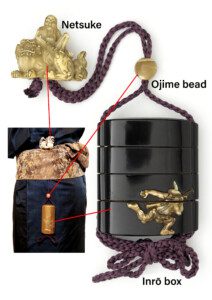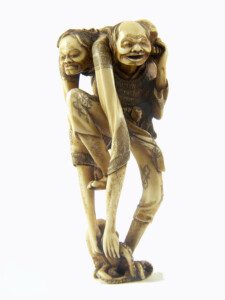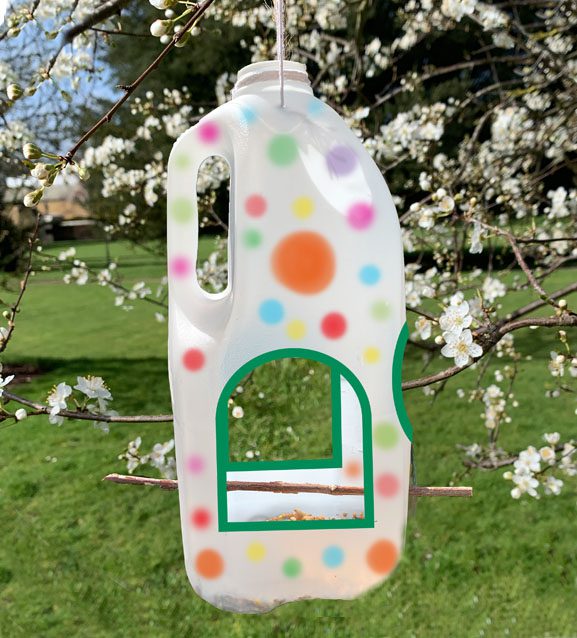Create your own netsuke with #MuseumMake – a fun craft activity inspired by The Powell-Cotton Museum.
Three things you should know about netsuke
What is a netsuke?
Netsuke were a small object used to fasten a container onto a sash or belt around a kimono. Different materials were used to make netsuke – boxwood, ivory, walnuts, and peach stones. They look like miniature sculptures small enough to fit into the palm of a hand.
How were they used?

Traditionally, in 17th-century Japan, clothing such as kimono and kasode had no pockets but people needed a place to store their personal belongings. Women could store items in their sleeves but men needed somewhere to keep items such as pipes, tobacco, money, or medicines.
The solution was to place these items in a container tied to the obi belt. The container, a pouch or a hand-carved wooden box known as an inro, would hang from the belt on a cord that was fastened in place by a netsuke.
What do they show?
While netsuke were simple objects used to fasten inro in place, they later became intricately carved pieces of art. Popular subjects were animals or creatures from Japanese folklore and legends, as were zodiac signs or masks used in Japanese theatre (kabuki) and religion.

In our collection at the Powell-Cotton Museum, there is Long Legs who waded far out to sea with Long Arms clinging to his back. Together they were able to gather many fish from the water.
People or trades may also be depicted, such as a Sake seller or a Hotei – a wise old man reading a book. Each netsuke can tell us something about Japan’s life, traditions or people.
Keywords
- kimono – a traditional Japanese wrapped-front garment with square sleeves and a rectangular body
- kosode – a short-sleeved Japanese garment which was used before the kimono
- obi – a sash or belt
- sagemono – container or pouch hanging from a belt
- inro – a carved wooden box
- ojime – a bead attached to the cord to hold the inro box shut
- kabuki –a classical form of Japanese theatre, mixing dramatic performance with traditional dance.
What Next?
You could
- make your own Netsuke with #MuseumMake. Download the activity sheet below.


